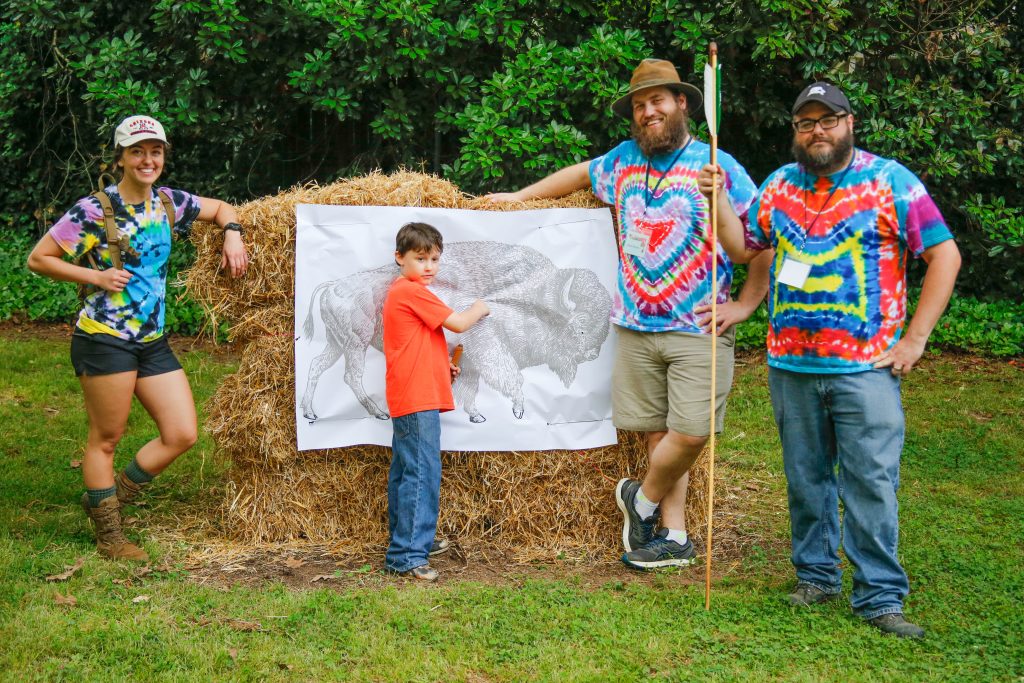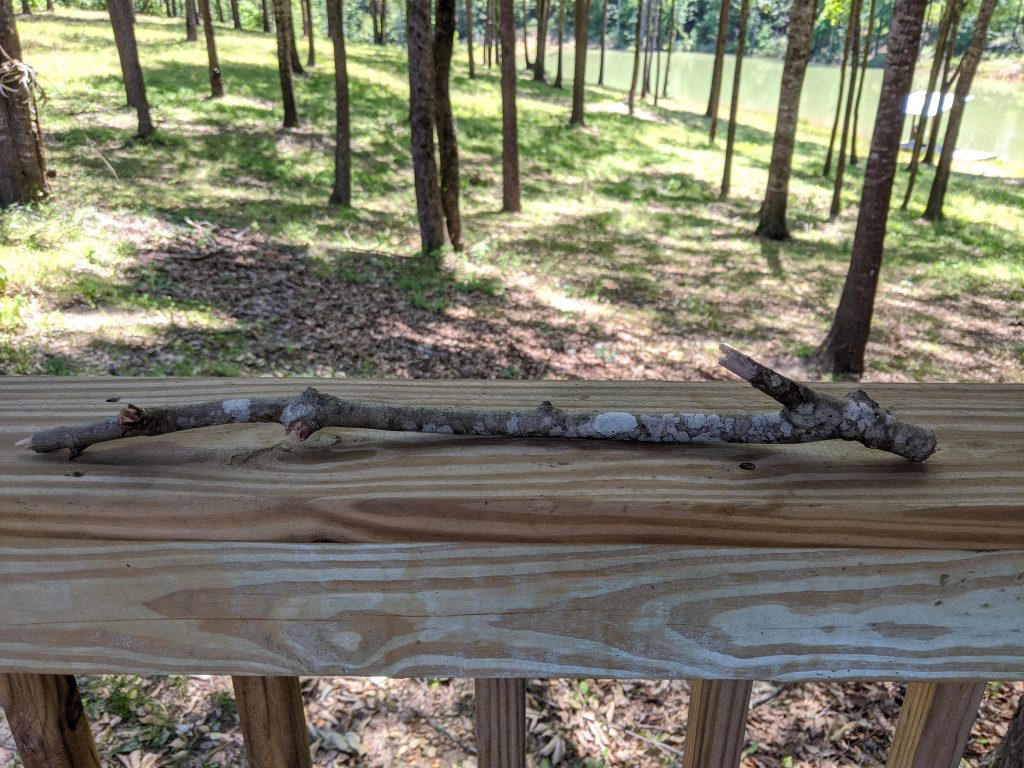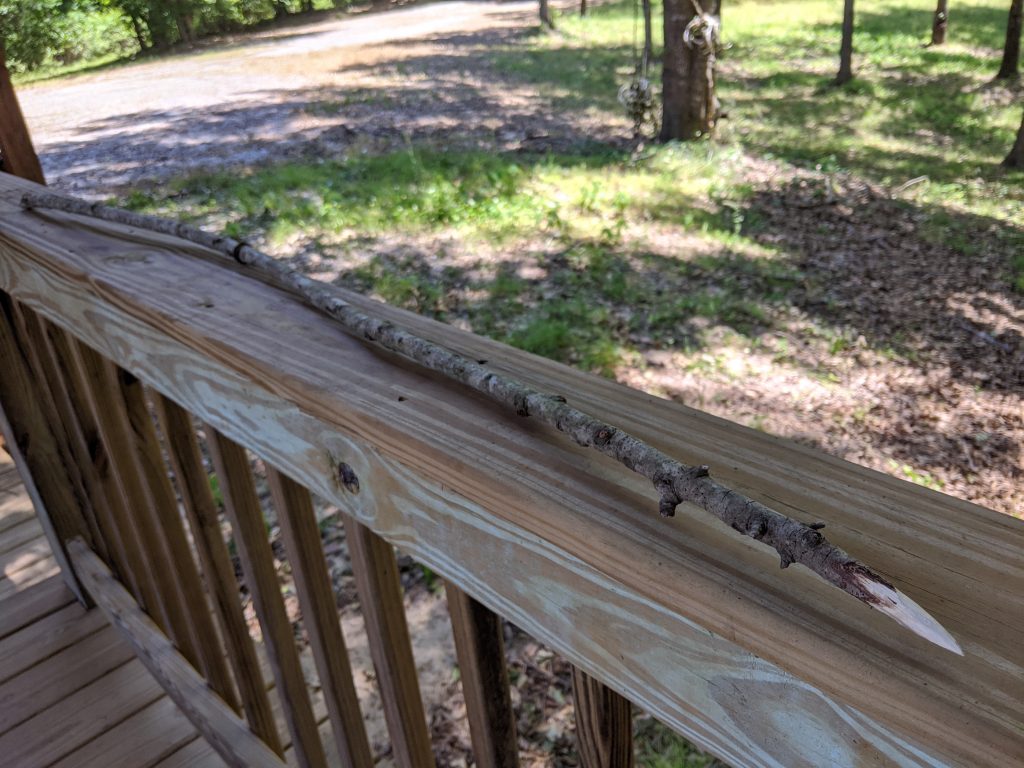
The atlatl (pronounced at-lat-l) is a dart-throwing tool traditionally made from a shaft of wood with a stone weight. Some atlatls also had a leather loop for the fingers. The atlatl allows a hunter to throw a dart harder, farther, and faster – up to 90 miles per hour!
Archaeological evidence suggests the atlatl was brought to the Americas with people from Asia over 15,000 years ago. Native Americans used the atlatl to hunt large and small game alike and continued to be a favorite tool even after the introduction of the bow and arrow.
The Paleoindians (ca. 10,500-800 BC) were the first people to use the atlatl in Georgia. Paleoindians used the atlatl and dart system to hunt large animals known as megafauna. These hunters and gatherers lived in highly mobile small groups that moved seasonally in response to different resources, especially the megafauna (i.e. mammoth, mastodon) they hunted.
Want to see the atlatl in action? Watch the video below to learn how the atlatl works and why it is such an effective weapon!
The Atlatl: How it Works
Activity:
Make your own atlatl!
*This activity requires adult supervision and assistance*
You can make your own atlatl at home with common items found in your yard and house. Gather the following materials:

- Two tree branches (one 15-20 inch-long branch and one 35-40 inch-long branch)
- Root snips
- Pocket knife
- Sandpaper
- Poster board or large sheet of paper
- Markers
- Hammer/Nails

- Clean up your tree branches with the root snips. On the shorter branch, leave a “hook” at one end. (Hint-if you can’t find a branch with a hooked end, just hammer a nail at an angle to be the hook).
- Strip away any remaining bark on your branches and sand them down until they are smooth. If you don’t have sandpaper, don’t worry about sanding your branches smooth. Just watch out for splinters!
- Use the pocketknife to carve out an indention in one end of the longer branch (the dart). This is where the hook on the shorter branch (your atlatl) will connect. Then use the knife to create a point on the opposite end of the long branch.
- Decorate the poster or paper with a mammoth, bison, or some other large game to be your target and secure it to a tree or hay bale in your yard.
- Before you use the atlatl (the shorter branch with the hook) to launch your dart, try throwing the dart with only your arm to hit the target. Measure how far you were able to throw the dart and record the distance. Take detailed notes about each throw!
- After watching the video above to learn how to use the atlatl, try it yourself! See how far you can launch the dart with the assistance of the atlatl. Measure and record the distance.
Discussion Questions
- How did using the atlatl to launch your dart change the distance and accuracy of your throw? Analyze the measurement data from both of your throws to make interpretations about the effectiveness of your atlatl. Did you get the results that you expected? *Advanced* Explain how the displacement, speed, velocity, and acceleration of the dart are affected by the use of the atlatl.
- Are there any elements that you think could be added to your homemade atlatl and dart to make your throws more accurate or cover more distance?
- Describe the Paleoindians. Why do you think they liked using the atlatl for hunting megafauna like mammoth and mastodon? Explain.
- The bow and arrow became a popular weapon in the Southeastern U.S. thousands of years after the atlatl. Compare the two weapons to determine the advantages and disadvantages of each.
Standards Connector:
| Grade Level | Standard | Description |
| Second | S2P2 | Obtain, evaluate, and communicate information to explain the effect of a force (a push or a pull) in the movement of an object (changes in speed and direction). a. Plan and carry out an investigation to demonstrate how pushing and pulling on an object affects the motion of the object. b. Design a device to change the speed or direction of an object. c. Record and analyze data to decide if a design solution works as intended to change the speed or direction of an object with a force (a push or a pull). |
| Second | SS2H2 | Describe the Georgia Creek and Cherokee cultures of the past in terms of tools, clothing, homes, ways of making a living, and accomplishments. a. Compare and contrast the Georgia Creek and Cherokee cultures of the past to those of Georgians today. |
| Third | SS3H1 | Describe early American Indian cultures and their development in North America. |
| Third | SS3H1 | Describe early American Indian cultures and their development in North America. |
| Eighth | S8P3 | Obtain, evaluate, and communicate information about cause and effect relationships between force, mass, and the motion of objects. a. Analyze and interpret data to identify patterns in the relationships between speed and distance, and velocity and acceleration. |
| Eighth | SS8H1 | Evaluate the impact of European exploration and settlement on American Indians in Georgia. a. Describe the characteristics of American Indians living in Georgia at the time of European contact; to include culture, food, weapons/tools, and shelter. |
| 9-12 | SP1 | Obtain, evaluate, and communicate information about the relationship between distance, displacement, speed, velocity, and acceleration as functions of time. |
These standards of excellence were sourced from the Georgia Department of Education web page at https://www.georgiastandards.org/Georgia-Standards/Pages/default.aspx
